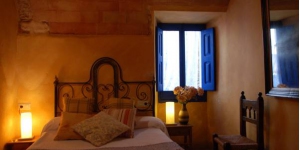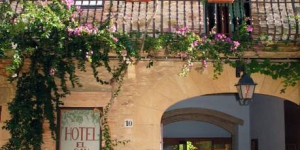
Palau-Sator Rural Museum is located in front of the resturant Can Pou, and was created in 1996 after a hard work of recovery and restoration of old tools and machinery of the own territory, to show the way of life of field workers in these areas. Basically, we can divide the museum into three zones: an important tool set to work the land, including machinery, crafts that were developed here and the different parts of the farmer family house (kitchen, bedrooms, barn, etc.).
Rural Museum Map
- Museums(1)
How to arrive to Rural Museum?
How to arrive from:Rural Museum Photos
Other interesting places near here
-
 1.9 miles away
1.9 miles awayThe Church of Sant Esteve de Peratallada is outside historic walls of center village, at the end of a lovely tree-lined promenade. It has its origins in the late twelfth century, with additions in later centuries, as the side chapels in the sixteenth and seventeenth centuries. The sober interior, made of stone, contains the tomb of the feudal lord of Gilabert Cruïlles, who died in 1348.
... -
 2 miles away
2 miles awayPeratallada Arches are in the village center and they are the paradigm of medieval architecture, in this peaceful location of the Ampurdan. Under the arches can be clearly seen the Catalan tiles and the limestone it was made.
... -
 3.1 miles away
3.1 miles awayThe Ullastret Iberian village, occupied by the indiketas Iberians tribe, located inside the Ampurdan, is the largest in Catalonia and was developed as a real city. Its origins date back to s. VI BC, long before the arrival of the Romans, and since its inception it was expanded and developed gradually, until it was abandoned at the beginning of s. II B.C. This site is part of the Route of the Iberians that can be fo......

